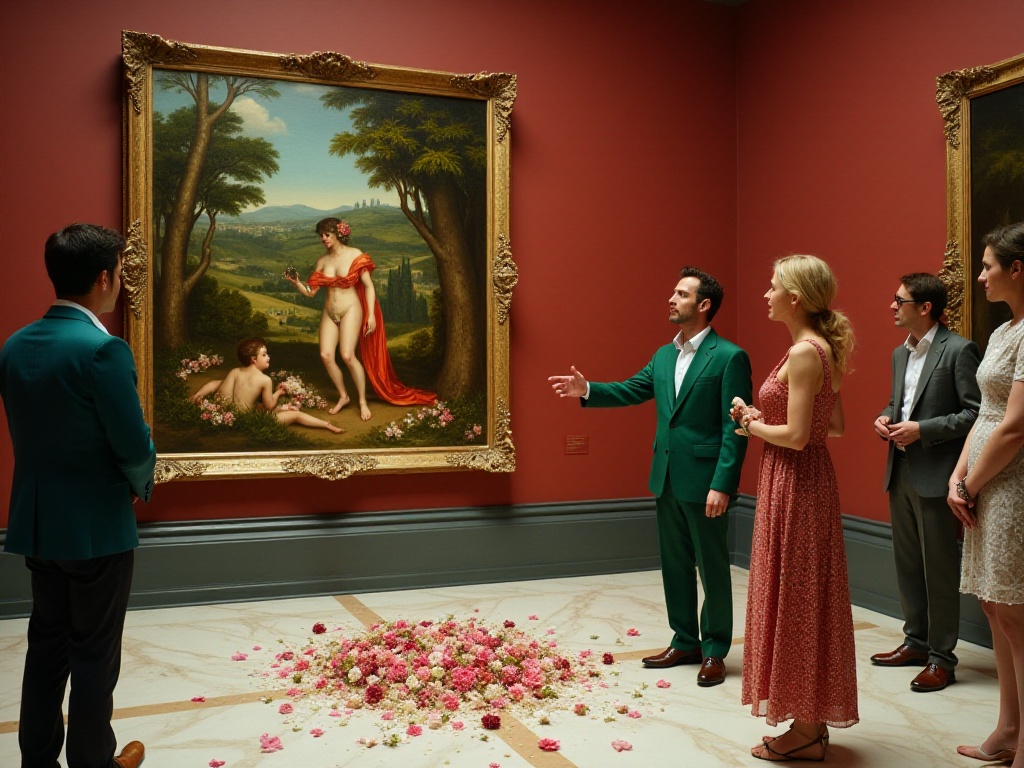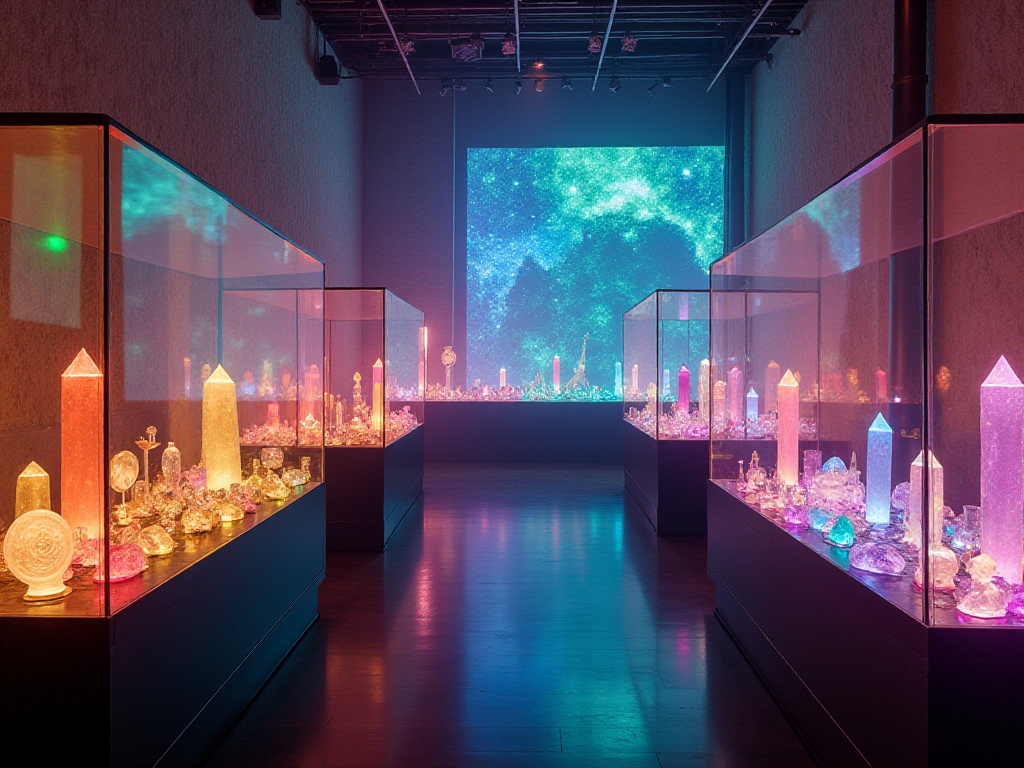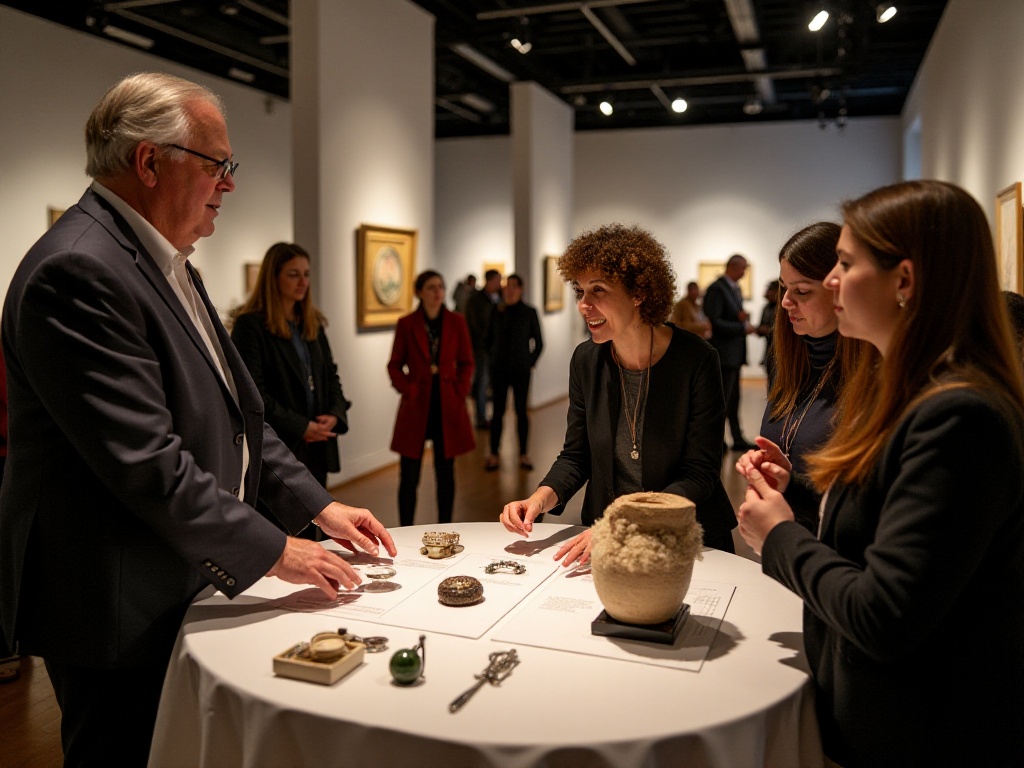Opening Thoughts
As a well-traveled tourism blogger, I've visited many world-class museums. Whenever I visit a new city, I always make it a point to visit the local museums first. Every time I see professional guides elegantly leading tour groups, I'm deeply moved. They not only need to master extensive professional knowledge but also possess excellent communication and adaptability skills. Sometimes I think, how wonderful it would be if I could become a professional museum guide! Today, let me share with you what a good museum guide experience should look like.
New Trends in Guided Tours
I remember visiting the Metropolitan Museum of Art last year and discovering that their guide services had undergone revolutionary changes. While traditional guides with microphones leading tour groups continued, more personalized options quietly emerged. Museums began to value each visitor's individual needs, striving to provide thoughtful services for visitors of different ages and cultural backgrounds.
Imagine taking out your phone and opening the museum's APP - it's like having a private guide speaking in your ear. This digital guidance left a particularly deep impression on me. You can completely design your own visiting route based on your interests and time. Some people like to savor each exhibit carefully, while others prefer to quickly browse key exhibition areas - all these needs can be met. Even better, many museum APPs support up to five languages, covering detailed explanations of hundreds of exhibits.
Besides APP guidance, many museums have also launched themed audio guide services. For example, at the Museum of Modern Art in New York, you can choose different themed interpretations such as "Artist's Perspective," "Curator's Interpretation," or "Children's Guide." Each theme is recorded by experts in related fields, providing accessible interpretations of the stories behind the artworks.
I particularly like the interactive guide programs designed for teenagers. Through gamified design, art knowledge becomes a series of interesting exploration tasks. I once saw a group of middle school students enthusiastically searching for clues and completing tasks in the exhibition hall with their tablets. This way of combining education with entertainment unconsciously made young people fall in love with art.
Golden Rules of Museum Guidance
As a tourism expert who frequently deals with museums, I've summarized some practical visiting tips. These experiences are valuable lessons learned from countless trials and errors, which I hope will help others avoid similar troubles.
First is time management. I recommend arriving 15-20 minutes early at the museum, allowing time to comfortably store luggage, get tickets, download APPs, etc. I often see tourists rushing in, only to miss the best guide times. Especially during peak seasons, many popular exhibition guide slots are limited, and being late might mean a long wait.
When visiting large museums, it's essential to plan your time wisely. My suggestion is to first identify the exhibitions you're most interested in and reserve ample time to appreciate them thoroughly. For instance, at the Louvre, if you particularly enjoy Renaissance art, you should focus your time on works by masters like da Vinci and Raphael. Don't try to see everything - that will only leave you physically and mentally exhausted.
Next is route planning. I learned this lesson the hard way at the British Museum. Without proper planning, I ended up going back and forth several times between the Egyptian and Greek galleries, wasting time and energy. Therefore, I suggest studying the floor plan carefully and planning the optimal visiting route. Many museum websites provide detailed gallery information and even recommend routes of different durations, which are excellent reference materials.
Proper attire is also important. Comfortable shoes are essential, as museum visits often involve lots of walking. Choose clothes that are easy to put on and take off, as gallery temperatures can fluctuate. I also recommend bringing a light backpack with water and snacks, as you'll inevitably feel thirsty and hungry during the visit.
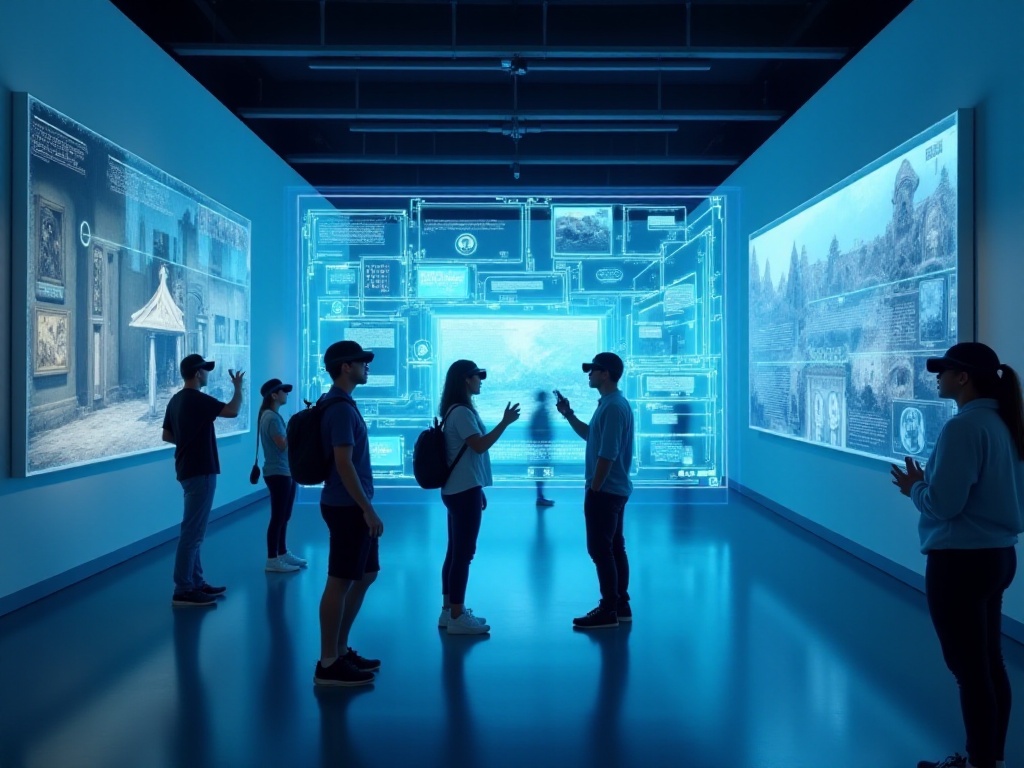
New Interactive Experiences
Speaking of museum interactive experiences, I must mention the "Art Cart" project at the National Gallery of Art. These mobile carts are filled with interactive props, making visits lively and interesting. I once saw a child spend nearly an hour at a cart, completely captivated by the joy of artistic creation. The carts have various brushes, paints, and papers, allowing children to imitate masters' works and truly experience the pleasure of artistic creation.
Many museums are now experimenting with innovative interactive methods. For example, the British Natural History Museum's "Night at the Museum" activity lets visitors sleep next to dinosaur fossils, experiencing a unique museum night. Some museums regularly hold workshops where artists demonstrate their creative process, allowing visitors to experience art's charm up close.
I particularly like the "touch zones" designed by some museums. In these special areas, visitors can touch replicas of certain exhibits, such as plaster models of Greek sculptures or dinosaur fossil replicas. This direct sensory experience is much more profound than purely visual appreciation. I remember once touching a piece of limestone from ancient Egypt in the British Museum's touch zone, and that feeling of crossing millennia left me deeply moved.
Interactive experiences aren't just about adding fun - more importantly, they help visitors build emotional connections with the exhibits. Through personal participation, we can better understand the stories behind artworks and feel the thoughts and emotions of their creators. This is why more and more museums are emphasizing interactive experience design.
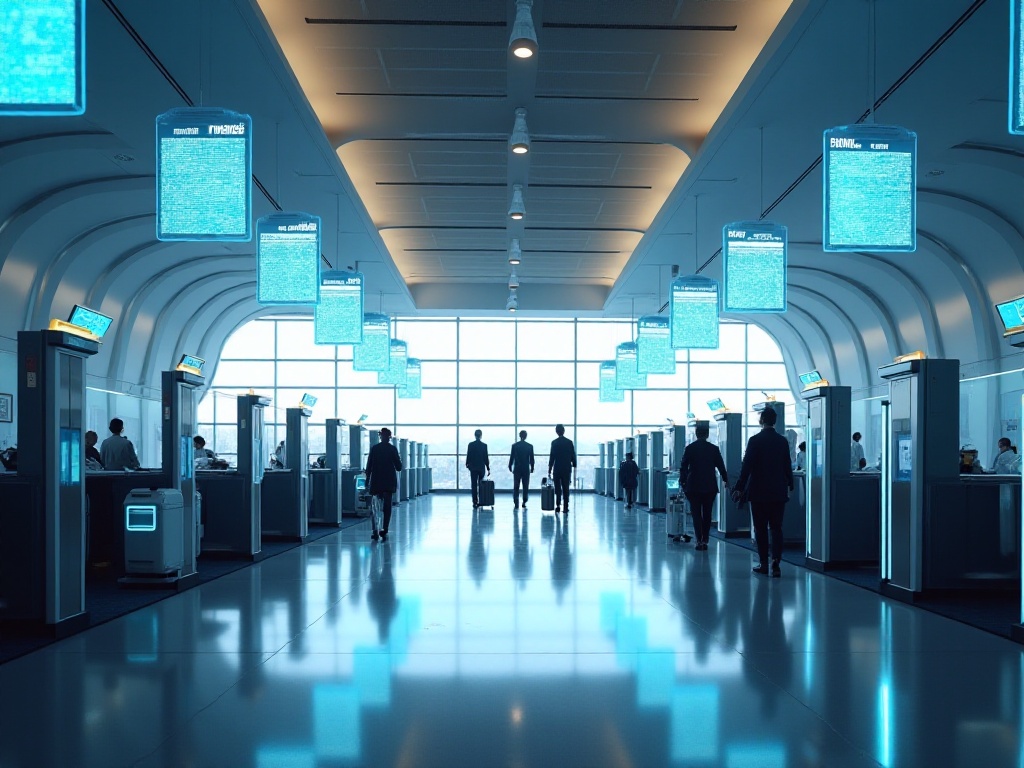
Secrets of Tour Guides
Did you know? An excellent guide often does extensive preparation work before officially leading a tour. All these behind-the-scenes efforts are aimed at providing visitors with the best experience.
Take my guide friend as an example - she starts preparing a week in advance whenever she takes on a new exhibition guide task. Not only does she thoroughly research the exhibits' background, but she also designs interactive questions. For instance, when explaining Van Gogh's Sunflowers, she might ask the audience, "What emotions do you think the sunflowers in the painting convey?" Such open-ended questions are particularly good at engaging everyone's participation.
Excellent guides need not only to be familiar with exhibit knowledge but also possess outstanding expression and improvisation abilities. My friend told me she often has to adjust her explanation pace and content based on the group's response. If she notices the audience is particularly interested in a topic, she'll elaborate appropriately; if she sees people's attention wandering, she'll immediately adjust her presentation style, perhaps adding some interesting anecdotes.
Guides also need to cater to visitors from different cultural backgrounds. For example, when explaining ancient Chinese bronzeware, foreign visitors need additional explanation of Chinese traditional cultural background, while local visitors might focus more on the artistic features and historical value of the artifacts.
I particularly admire guides who can conduct tours in multiple languages. They not only need to master multiple languages but also understand taboos and customs in different cultures. This helps them avoid cultural conflicts during explanations and makes every visitor feel comfortable and respected.

New Technology Experiences
Museum guides are now deeply integrated with technology. When I visited the Louvre, guides used tablets to occasionally show historical photos and 3D reconstruction models, making abstract history tangible and easy to understand. The use of such technology greatly enhances the visiting experience.
Many museums have started experimenting with Augmented Reality (AR) technology. You only need to point your phone at an exhibit to see relevant dynamic displays. For example, pointing at a dinosaur fossil brings up what the dinosaur looked like when alive, and you can even see animations of them walking and foraging. This technology is particularly popular with young people, making dry history come alive.
Virtual Reality (VR) technology is also widely used in museums. I experienced an ancient Egyptian-themed VR project at the British Museum - wearing VR goggles made me feel like I was really inside a pyramid from thousands of years ago. Through this immersive experience, I gained a deeper understanding of ancient Egyptian civilization.
Some museums have started using artificial intelligence technology to optimize visiting experiences. For instance, by analyzing visitor behavior data, they can recommend personalized routes for different types of visitors. Some museums are even developing intelligent guide robots that can adjust their explanations in real-time based on visitors' questions.

Helpful Tips
For friends planning to visit museums, I have several suggestions based on my years of visiting experience.
First, pay attention to museum opening hours. Many museums stay open later on Thursdays and Fridays, when there are relatively fewer visitors - these are good times to visit. I suggest visiting on weekday afternoons when there are fewer tour groups and student groups, allowing you to quietly appreciate the exhibits.
Second, familiarize yourself with various facilities. Know the locations of rest areas, water fountains, and restrooms in advance. I've seen many visitors struggling through their visits, exhausted because they didn't know where rest areas were, which greatly affects the experience. Many large museums have restaurants and cafes - taking appropriate breaks to replenish energy during the visit is necessary.
It's best to check the museum's official website before visiting to learn about current special exhibitions. Some temporary exhibitions might require additional tickets, which are best booked in advance. I've learned this lesson several times, arriving only to find desired special exhibitions sold out.
If bringing children, pay special attention to choosing appropriate time slots and exhibition areas. Many museums have dedicated children's areas with interactive projects designed for kids. Visit time should be controlled within two hours to prevent children from losing interest due to fatigue.
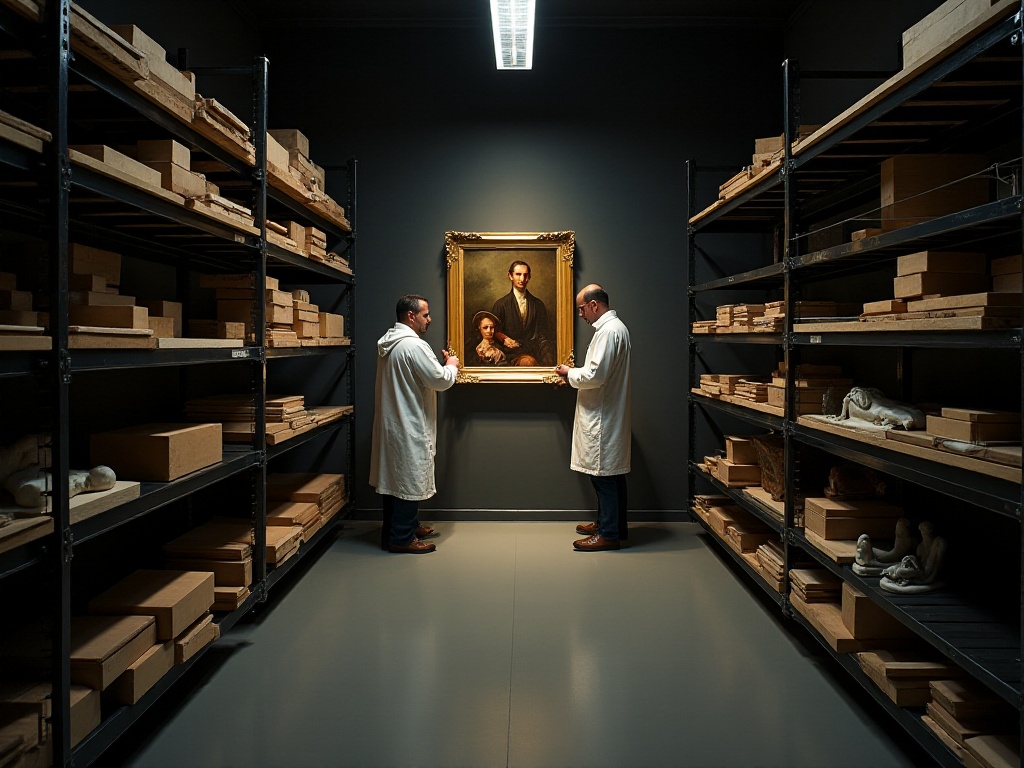
Future Outlook
Watching the rapid development of museum guide services, I can't help but wonder: what will future museum experiences be like? Perhaps virtual reality technology will let us travel through time and talk face-to-face with historical figures? Perhaps artificial intelligence will customize perfect visiting routes for each visitor?
The future museum I imagine would be a place full of technology yet not lacking in humanistic care. Through holographic projection technology, we might see vivid historical scenes recreated. Through brain-computer interface technology, we might directly experience artists' creative journeys. Museums might become knowledge halls that transcend time and space, allowing us to understand human civilization's development in unprecedented ways.
But no matter how technology develops, the core value of museums will never change. They are witnesses to human civilization and important places for knowledge inheritance. The purpose of museums' existence is to continuously innovate guided tours to help more people get closer to art and understand history.
These imaginings fill one with anticipation. What do you think future museums will become? Welcome to share your thoughts in the comments section. Let's look forward to more surprises and touching moments that museums will bring us.





